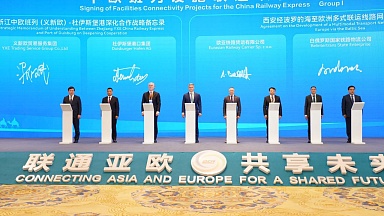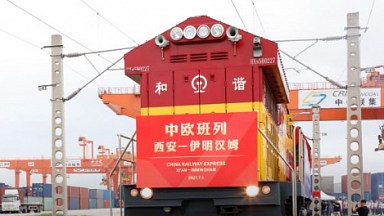These views were presented during the ‘One Million Club’ digital conference held by the United Transport and Logistics Company — Eurasian Rail Alliance (UTLC ERA) last week. The conference had multiple attendees, including managers from Chinese, Russian and European companies and focused on the possible, public or private, initiatives that could boost China-Europe-China traffic.
2020 overview
The past year brought unprecedented developments in rail transportation, mostly with a positive nuance. UTLC ERA experienced an increase of 64 per cent during 2020 and reached the milestone of half a million TEUs. Specifically, the company transported 546,900 TEUs in complete roundtrips between EU-China.
On the other hand, DB Cargo Eurasia handled 12,000 train journeys and a total of 200,000 containers. Compared to 2019 the company operated 300 more train trips between Duisburg or Hamburg and various Chinese hubs.
The main trends that helped to accomplish these increased numbers relate to the brisk trade of specific products. For instance, medical equipment, car parts, electrical goods and cooling agents were among the most demanded goods. Moreover, Russian allowing the transit of sanction goods such s fresh fruit and vegetables through its territory also played an essential role in the growth of rail freight.
Hubs and network
UTLC ERA presented that currently 21 countries and 92 cities are linked in the Eurasian network. However, Germany seems to gain the most benefits of rail freight transport since half of the trains between China and the EU have the European country as their destination. Thus, Germany is the main hub and distribution point for the rest of Europe, especially with its busy ports.
Speaking of German ports, Mukran and Rostock have been crucial in connecting the enclave of Kaliningrad and other European destinations. Westbound trains arriving in Kaliningrad reload their cargo on vessels that undertake the sea legs to Mukran and Rostock. From there, cargo can reach countries like Italy. Of course, products can also travel in the opposite direction. In any case, there is a whole new multimodal network in the making that includes rail-sea-rail services allowing better connectivity not only with the East but also throughout Europe.
Kaliningrad entered competitively the game of alternative transit routes last year when other European entry points started collapsing under the pressure of increased traffic and congestions. It proved to be very successful, which is why it acquired further connections with the rest of Europe. On top of that, as Carsten Hinne, CEO of DB Cargo mentioned during the online event, the German company is planning to expand its collaboration with UTLC ERA on the Kaliningrad route and use it more intensively.
Modernisation
One of the Eurasian transportation’s critical prerequisites is that of innovative and modern solutions related to digitalisation and interoperability. There has already been enough work that improved the situation moderately in this direction. For instance, trains’ energy efficiency and the quicker customs clearance in the EU-China border crossings have been significant conquests. Moreover, shorter times in the reloading of containers between the broad and standard gauge systems also constitute a positive development.
For the developments about to follow, these include the construction of five modern transit terminals in Kazakhstan and the launching of new border crossings complementary to Brest/Malaszewicze that will diversify the options of operators. Finally, according to DB Cargo, «there are plans to use more digital solutions and environmentally friendly technologies that include the paperless processing of transport orders or digital transport tracking».



